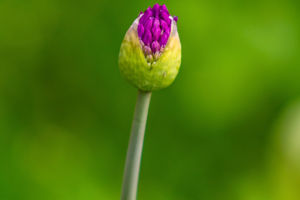Aloe vera, a succulent plant renowned for its soothing gel and health benefits, is also gaining attention for its ability to improve indoor air quality.
Among its various advantages, one of the most intriguing is its capacity to absorb formaldehyde, a common indoor air pollutant found in many household products.
Understanding this plant's role in purifying the air can empower homeowners to create a healthier living environment.
Formaldehyde is a colorless gas with a strong odor, commonly emitted from products like adhesives, disinfectants, and building materials. Long-term exposure to formaldehyde can lead to various health issues, including respiratory problems and skin irritation.
Given the increasing prevalence of formaldehyde in modern homes, incorporating plants like Aloe vera can serve as a natural solution to mitigate these risks.
Research indicates that plants play a crucial role in absorbing volatile organic compounds (VOCs), including formaldehyde. Aloe vera has shown remarkable effectiveness in this regard.
The plant's structure and physiological processes enable it to absorb these harmful substances through its leaves. The stomata, small openings on the leaf surface, allow gases to enter, where they can be metabolized and converted into less harmful compounds.
Moreover, Aloe vera's ability to absorb formaldehyde extends beyond mere absorption; it also promotes a healthier indoor environment through oxygen production.
During photosynthesis, Aloe vera converts carbon dioxide into oxygen, improving overall air quality. This process becomes particularly beneficial in enclosed spaces where air circulation may be limited.
The combination of formaldehyde absorption and oxygen release makes Aloe vera an ideal choice for enhancing indoor air quality.
In addition to its air-purifying qualities, Aloe vera offers several other benefits. The gel extracted from its leaves is widely used in skincare, promoting hydration and healing.
Its anti-inflammatory properties make it a popular remedy for burns and skin irritations. By keeping Aloe vera plants in your home, you can enjoy both the aesthetic appeal of greenery and the myriad health benefits associated with this versatile succulent.
To maximize the benefits of Aloe vera in your indoor environment, consider incorporating multiple plants. A single Aloe vera plant can absorb a limited amount of formaldehyde, so having several can enhance its effectiveness.
Placing them in various rooms, especially those with high levels of VOCs—such as kitchens and bathrooms—can create a more balanced air quality throughout your home.
Caring for Aloe vera is relatively simple, making it an accessible choice for indoor gardening. The plant thrives in well-draining soil and requires minimal watering, as it is adapted to arid conditions.
Ensure it receives plenty of indirect sunlight, as too much direct sunlight can scorch its leaves. This low-maintenance characteristic further solidifies Aloe vera's appeal as a practical air-purifying option for busy households.
Aloe vera's ability to absorb formaldehyde positions it as a vital component of indoor air quality improvement. By integrating this plant into your living space, you not only combat harmful pollutants but also reap the rewards of its therapeutic properties.
As our understanding of indoor air quality grows, embracing natural solutions like Aloe vera can lead to healthier, more sustainable living environments.
With its combination of air purification and skincare benefits, Aloe vera truly stands out as a remarkable plant that contributes positively to our homes and well-being.


